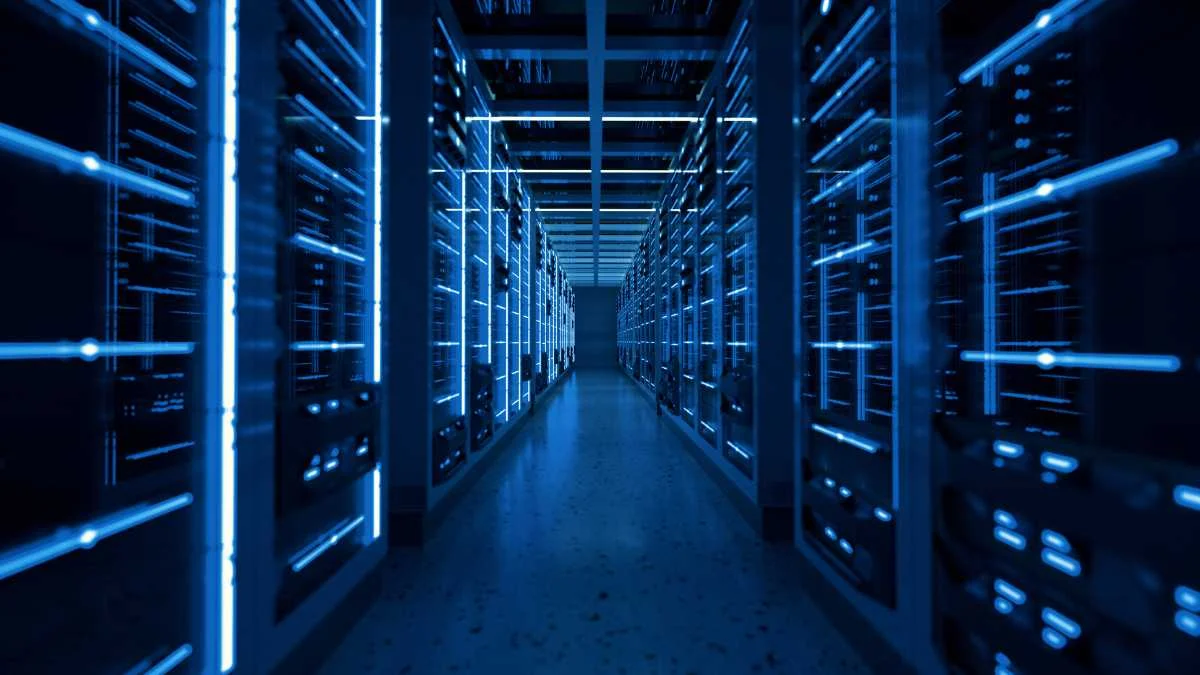In today’s digital landscape, data centers serve as the digital heartbeat for businesses across every sector. The backbone of the internet, these facilities safeguard and process the world’s data, enabling everything from streaming services and social media to e-commerce and cloud computing.
Given their critical role, constructing a new data center is no small feat; it demands cutting-edge technology, meticulous planning, and an unwavering commitment to resilience and sustainability.
This guide navigates the complex data center construction process, outlining considerations at each stage, from conception to completion, to help mitigate risk in data center construction.
Design and planning
Before a single wire is laid, a resilient data center begins with exemplary design and planning. This phase is far more than drawing blueprints—it’s about envisioning a center that can adapt to the unpredictable technological demands of the future.
Factors to consider in the design phase
Initial design considerations should encompass the following:
- Workload needs: Understanding the types of workloads the center will support (e.g., big data analytics, cloud services) is crucial in tailoring the data center’s infrastructure.
- Physical layout: Determining the appropriate layout for servers, storage, and networking equipment to optimize space and energy usage.
- HVAC and power systems: Incorporating robust climate control and uninterruptible power supply (UPS) systems to maintain optimal conditions and avoid data loss due to power disruptions.
Scalability and flexibility in the blueprint
A successful data center design is one that is scalable and flexible. This means foreseeing how additional server racks can be seamlessly incorporated and how new technologies can be integrated without significant downtime.
Site selection
The location of a data center can significantly impact its long-term performance and cost-effectiveness. Strategic site selection can align a data center with the natural environment, reduce energy costs, and minimize operational risks.
What makes an ideal data center location?
Key criteria include:
- Proximity to network infrastructure: A location close to major network routes and peering points can enhance connectivity and reduce network latency.
- Economic incentives: Many cities and regions offer incentives for data center operators, such as tax breaks and grants, which can significantly affect overall operation costs.
Environmental and geographical considerations
Site selection must also account for the following:
- Resilience against natural disasters: Selecting a site that is least prone to earthquakes, hurricanes, and floods is critical in protecting the data center and its contents.
- Socio-politico-economic climate: The stability and predictability of the local regulatory environment are important to consider, as these can impact operations and expansion.
Construction and implementation
With the vision and the site in hand, construction and implementation bring the data center to life. In this stage, all the meticulous planning begins to manifest in the physical world, meaning that unforeseen challenges often arise.
Best practices for data center construction
To ensure a successful build:
- Adhere to standards: Strictly follow industry regulations and standards to guarantee safety, reliability, and performance.
- Collaborate with experts: Engage experienced contractors and architects with a proven track record in data center construction.
Project management tips for smooth implementation
Effective project management is key. This involves:
- Frequent communication: Keeping open lines of communication between all stakeholders to address issues proactively.
- Contingency planning: Preparing for the unexpected by having backup plans in place for major construction delays or disruptions.
Sustainability and efficiency
The data center construction industry is increasingly under pressure to minimize its environmental footprint. Sustainable practices are not just an ethical imperative—they also lead to long-term cost savings and often better operational performance.
Reducing energy consumption inside and out
Key strategies for energy reduction include:
- Efficient hardware: Deploying high-efficiency servers, storage, and networking technologies that consume less power and produce less heat.
- Passive cooling: Utilizing natural ventilation or evaporative cooling systems to lower energy needs for traditional HVAC.
Incorporating green technologies for a sustainable future
Data centers can turn to renewable energy sources, like wind and solar, to power their operations. Additionally, innovations like liquid cooling, which is far more efficient in dissipating heat, can further reduce their carbon footprint.
Security and redundancy
In a world where data breaches make daily headlines, security is paramount. The same applies to redundancy—keeping operations running even if a component fails.
Data security imperatives for data centers
Ensure robust security through:
- Physical access controls: Biometric systems, mantraps, and 24-hour surveillance are used to control and monitor access to critical areas.
- Cybersecurity measures: Implement multi-layered security protocols to safeguard data against internal and external threats.
Innovative redundancy systems keeping data afloat
Modern data centers employ innovative redundancy systems like:
- Geographic redundancy: Duplicating data across multiple data centers geographically separated to mitigate the risk of site-wide failure.
- Real-time monitoring: Using sophisticated AI systems to monitor operations and automatically switch to redundant systems if anomalies are detected.
Maintenance and upgrades
Once the data center is operational, the work is far from over. Regular maintenance and strategic upgrades are essential to ensure the center operates at peak efficiency.
Regular maintenance practices for optimal performance
Maintenance best practices involve:
- Scheduled inspections: Consistently check all equipment and infrastructure to catch potential issues before they escalate.
- Cleaning and dust control: Routinely clean servers, fans, and filters to maintain optimal working conditions and reduce the risk of system failures.
Considerations for future upgrades and expansions
Future-proofing involves:
- Lifecycle planning: Regularly review and update the data center’s lifecycle plan, anticipating when equipment will need to be replaced or upgraded.
- Scalable design: Maintain a flexible design to allow for easy expansion or modification as business needs evolve.
Conclusion
In the fast-evolving landscape of technology, the strategic planning, construction, and management of data centers remain pivotal for ensuring uninterrupted digital services worldwide.
Organizations can achieve operational excellence and foster innovation by adopting sustainable practices, ensuring robust security, and maintaining a forward-looking approach towards upgrades and expansions. The pursuit of data center excellence is not just about housing servers—it’s about powering the future of technology.









